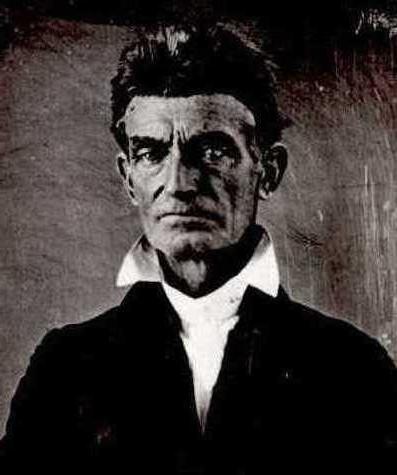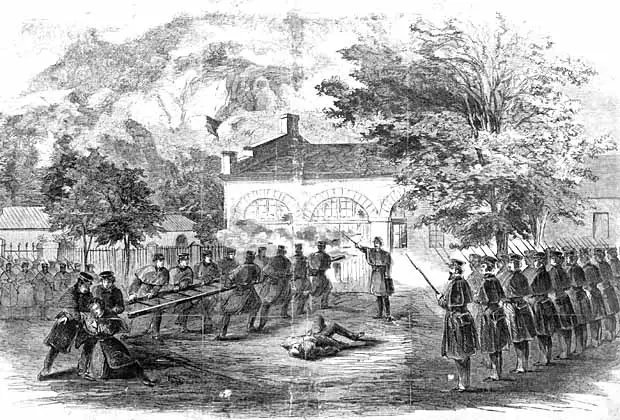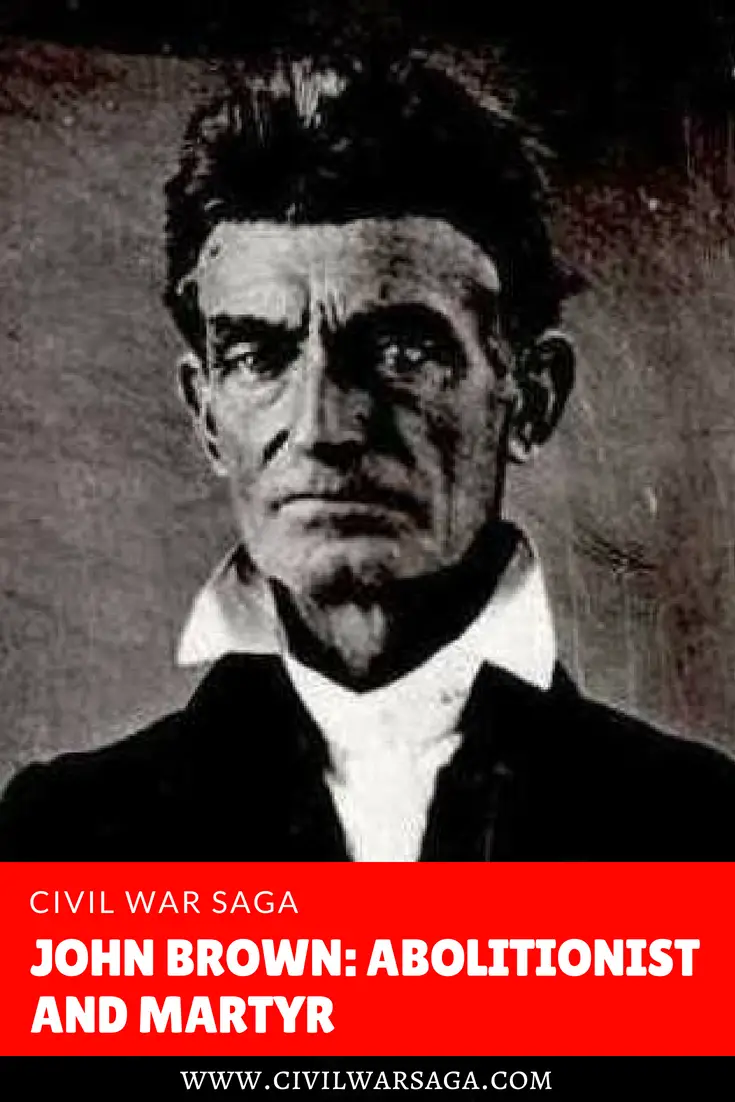John Brown was an abolitionist most known for his failed raid on Harper’s Ferry in Virginia.
Brown was born in May, 1800 in Torrington, Connecticut, into a family with strong abolitionist beliefs, Brown learned to hate slavery from a young age. When Brown was five years old, he moved with his family to Ohio when he was five years old.
After Brown grew up he moved around the country a lot with his wife and twenty children, looking for work. He worked as a tanner, farmer, wool merchant and land speculator but still struggled to provide for his family.
Despite his financial difficulties, Brown still found ways to help the abolitionist cause by participating in the underground railroad, financing abolitionist publications, giving land to fugitive slaves and forming the League of Gileadites, an organization dedicated to protecting escaped slaves from slave hunters.

John Brown
Brown met fellow abolitionist Frederick Douglass in 1847, who declared that Brown “though a white gentleman, is in sympathy a black man, and as deeply interested in our cause, as though his own soul had been pierced with the iron of slavery.”
Brown moved his family to a black community in North Elba, New York in 1849, to act as a “kind of father” to the local black citizens struggling to run their farms in the area.
Then in 1855, Brown followed five of his sons to the Kansas territory where he became a leader of anti-slavery guerrillas and defended local towns from pro-slavery attacks.
In retribution for one attack, Brown went to a nearby pro-slavery town, dragged five men out of their cabins and brutally killed them.
For years, Brown had an idea to start a war against slavery but never put his ideas into action. After moving back east, Brown began planning a raid on the federal arsenal in Harper’s ferry, Virginia.
The plan was to raid the arsenal for weapons and distribute them to slaves in an attempt to start a slave uprising. He raised money for his “army” and moved into a nearby farmhouse in Maryland across the river from the arsenal to plan out the attack.

Harper’s Weekly Illustration of John Brown’s Raid, circa 1859
The raid took place on the night of October 16, 1859, when Brown and 21 of his men marched towards the town in the rain and captured the armory and arsenal.
Brown and his men then rounded about 60 citizens as hostages and waited in the firehouse for nearby slaves to rise up and join the fight.
The slaves never came but local militia groups, marines and soldiers surrounded them.
During the standoff, 10 of Brown’s men were killed, including two of his sons, five men escaped and Brown was wounded. The soldiers eventually moved in and Brown surrendered.
Brown was taken to Charlestown, Virginia and charged with murder, treason and inciting a riot. Brown spoke out against injustice during his trial and inspired other abolitionists to help end slavery:
“I believe to have interfered as I have done, . . . in behalf of His despised poor, was not wrong, but right. Now, if it be deemed necessary that I should forfeit my life for the furtherance of the ends of justice, and mingle my blood further with the blood of my children, and with the blood of millions in this slave country whose rights are disregarded by wicked, cruel, and unjust enactments, I submit: so let it be done.”
Brown was quickly convicted and sentenced to death. Rumors swirled that his supporters would rise up and attempt to free Brown at the gallows.

John Brown photographed by Augustus Washington in 1846-7
To prevent this, the gallows were heavily protected by soldiers and militia groups, including Stonewall Jackson, who was then a professor at the Virginia Military Institute, as well as the volunteer militia group, the Richmond Grays, with its newest volunteer John Wilkes Booth, on the day of the hanging on December 2, 1859.
On his way to the gallows, Brown passed a note to one of his supporters that read,:
“Charlestown, Va. 2nd December, 1859. I John Brown am now quite certain that the crimes of this guilty land: will never be purged away; but with Blood. I had as I now think: vainly flattered myself that without very much bloodshed; it might be done.”
Brown’s words came true just a few years later with the start of the Civil War.
Sources:
“John Brown, Abolitionist”; David Reynolds; 2006
Biography.com: John Brown’s Biography: www.biography.com/articles/John-Brown-9228496
PBS: The Raid on Harper’s Ferry: www.pbs.org/wgbh/aia/part4/4p2940.html
PBS: John Brown: www.pbs.org/wgbh/aia/part4/4p1550.html

